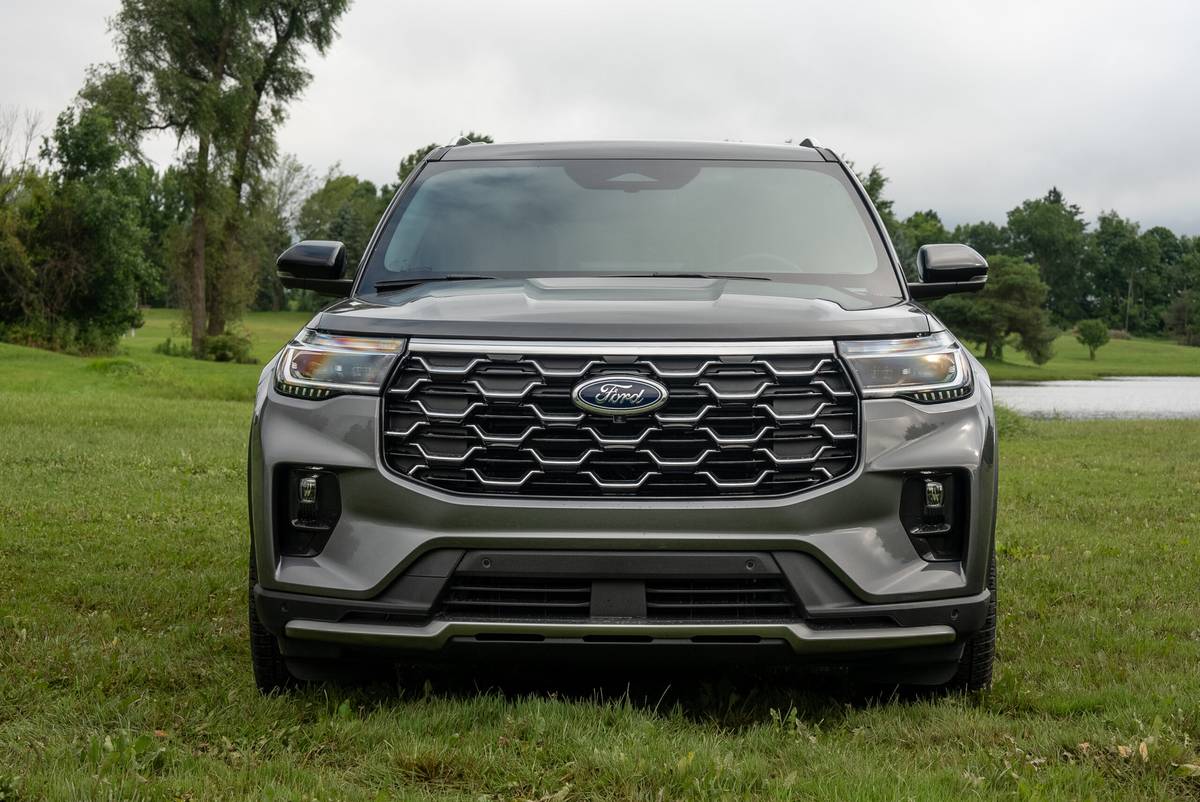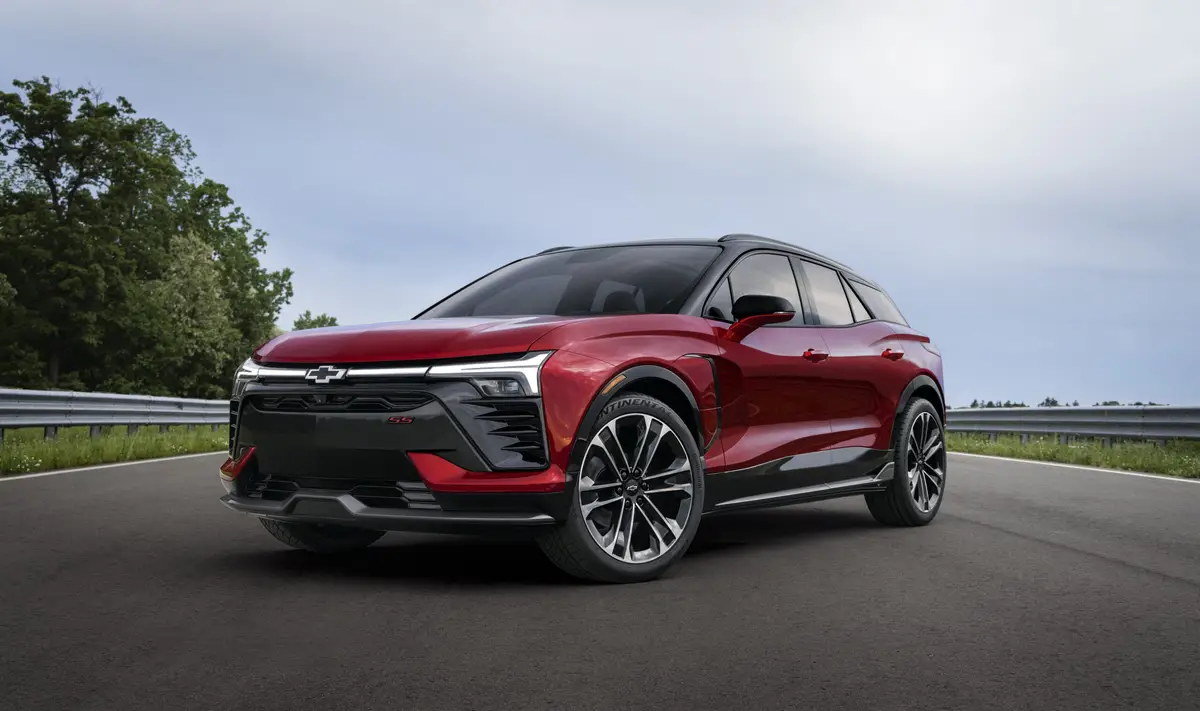2007 Saab 9-3: What's New
Vehicle Overview
For 2007, the Saab 9-3 gets four new exterior colors, a new gauge cluster for the interior and new options all around.
The 9-3 is available as a convertible, SportCombi (read, wagon) and sedan. The Aero is the uplevel trim in all body styles, and each comes with a 2.8-liter turbocharged V-6 engine.
Base models feature 16-inch alloy wheels, a seven-speaker sound system and a power driver’s seat. The convertible adds standard leather seats. Aero models include the more powerful engine, 17-inch wheels and slightly larger brakes. Both trims offer manual and automatic transmissions. The 9-3’s competitors include the Audi A4, BMW 3 Series and Volvo S60.
(Skip to details on the: 9-3 Convertible or 9-3 SportCombi)
Exterior
For 2007, the 9-3 adds Electric Blue Metallic, Smoke Beige Metallic and Artic White color choices for convertible models, while the sedan and SportCombi get a new Titan Gray Metallic option.
Styling features include a coupelike silhouette, an integrated grille and headlights, short front and rear overhangs, and a steeply raked windshield and back window. The automaker says negative wheel camber reinforces the 9-3’s sporty stance and wedgelike profile. With its low 0.28 coefficient of drag, the 9-3 sedan’s aerodynamics are appealing. Low lift forces at the rear axle should improve high-speed stability.
Interior
The instrument cluster is larger and features chrome details for 2007. Saab says it’s given the interior new trim, and XM Satellite Radio is now a standard feature on Aero models.
The 9-3 sedan accommodates up to five people and features a 60/40-split, folding rear seat. According to Saab, the instrument panel “arcs around the driver.” The gauges light up in green, and buyers can specify a Night Panel that suppresses most instruments. Red walnut trim is available in the sedan and wagon. The sedan’s trunk holds 14.8 cubic feet of cargo.
Under the Hood
The 9-3 offers two engines. Base models receive a 210-horsepower, turbocharged 2.0-liter four-cylinder that generates 221 pounds-feet of torque. The new SportCombi wagon features a 250-hp, turbocharged 2.8-liter V-6 that churns out 258 pounds-feet of torque. The V-6 features variable valve timing and is standard in all Aero models. Base models offer either a five-speed manual or five-speed automatic transmission, while Aero models get six gears in either arrangement. Both automatic transmissions offer manual shifting capability.
Safety
A long list of standard safety equipment includes seat-mounted side-impact airbags, side curtain airbags, Active Head Restraints, traction control, and an electronic stability system with all-disc antilock brakes and electronic brake-force distribution. Convertibles get side-impact airbag head extensions in place of the curtain airbags. Across all configurations, Aero models get slightly larger disc brakes.
Driving Impressions
Saab promotes the sportiness of its 9-3 sedan, and the claim is valid. In tight, quick maneuvers, the 9-3 holds its own easily against the Audi A4 and BMW 3 Series. Though it’s stable and confident on the road and easy to drive in town, the 9-3 doesn’t have the same overall sporty feel of some rivals.
With the base engine and automatic transmission, throttle response is eager once you get rolling; only the barest hint of turbo lag is noticeable. The manual gearbox works with light, easy action and positive clutch behavior. The cockpit and seats are driver-oriented, and the sedan doesn’t feel cramped up front. Backseat space is cozy but sufficient.
9-3 Convertible
After launching the redesigned compact 9-3 sport sedan for 2003, Saab released the 9-3 convertible as a 2004 model. Both feature the same chassis dynamics. Saab says the 9-3 convertible is nearly three times as stiff as its soft-top predecessor. The convertible got an all-new suspension layout, and supplementary “ring of steel” reinforcement compensates for the loss of structural rigidity that convertibles ordinarily suffer. The seat belts are integrated into the seat frames, and the rear seats have pop-up roll bars.
All convertibles come in either base or Aero form, with the 210-hp turbocharged four-cylinder in base models and the 250-hp turbocharged V-6 in Aero editions. Leather seats are standard. In base models, a five-speed manual or five-speed automatic is available. Aero models offer a six-speed manual or six-speed automatic.
Driving the 9-3 convertible is virtually effortless. Performance is comparable to the equivalent sport sedan. The soft-top exhibits a magnificent highway ride and precise steering and handling. Back to top
9-3 SportCombi
The SportCombi wagon completes Saab’s 9-3 lineup for 2006. Saab says the SportCombi carries on the hatchback tradition that Saab owners enjoy. It features a signature wedge-shape profile ending in vertical, LED-lit taillamps and an integrated roof spoiler.
The SportCombi also debuts the 9-3’s first V-6 engine. Displacing 2.8 liters, the turbocharged V-6 produces 250 hp and 258 pounds-feet of torque — a significant increase over the turbocharged four-cylinder’s 210 hp and 221 pounds-feet of torque. The latter engine is still available in base-model SportCombis.
Tested on autocross, slalom and wet-handling courses, the 9-3 SportCombi Aero performs with grace and precision, responding with satisfying certainty to steering-wheel inputs. Steering is a bit on the light side despite Saab’s claim of greater weighting. Acceleration is enthusiastic with either the manual or automatic transmission, but there is a touch of turbo lag when accelerating after a tight autocross turn. The automatic transmission’s manual-shift mode may actually detract from performance — even when the paddle shifters on the steering wheel are used.
Smooth roads yield a near-gentle ride and appealing control through turns. Saab’s electronic stability system is highly beneficial through wet curves, yielding an appreciated level of confidence. Braking from high speeds is swift at times but less assertive on other occasions.
Backseat headroom and toe space are abundant, but legroom suffers if the front seat is adjusted rearward. The center occupant must endure a high, hard perch and straddle a tall floor hump. Cargo space is appealing. Back to top
Featured stories



